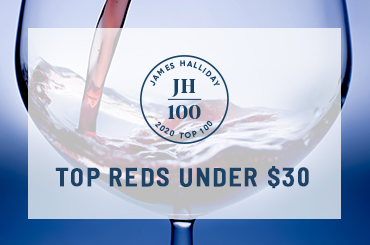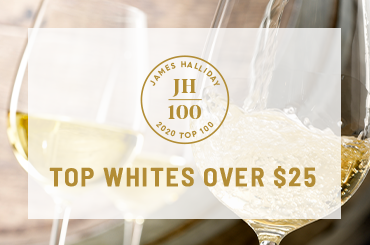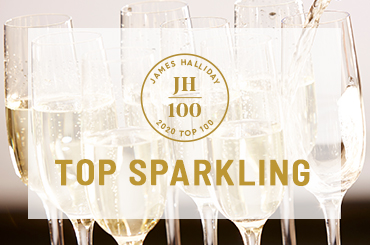This year’s Top 100 is drawn from my database of more than 2800 wineries, 1165 of which were profiled in the 2021 Halliday Wine Companion. Of the top-rated wineries, 325 were invited to send six of their best wines. The headlines go to the four table wine sections of 20 wines: white wines under and over $25, and red wines under and over $30. I endeavour to cover a spread of varieties and regions but not on a pre-determined mix. The ‘big two’, chardonnay (19 per cent of the total crush) and shiraz (25 per cent), dominate because they present many different faces reflecting the different regions and climates in which they are grown without obscuring their varietal DNA.
Full list of Top 100 wines.
Chardonnay dominates the white wine category, but the variety and category are of declining importance compared with shiraz and red wine. Chardonnay’s 2020 crush was the lowest since 2001 and the white category has been in decline since 2015. Chardonnay’s area has decreased by 1000ha since 2015 while that of shiraz has increased by 1700ha. The battle between shiraz and chardonnay across all four price segments saw 16 chardonnays chosen, one more than shiraz.
Riesling secured 10 selections, pinot noir eight, grenache and cabernet sauvignon six each. Another 13 varieties or blends secured one to three spots. Riesling stands unchallenged as the white wine runner-up. Its best wines come from more than 10 regions across NSW, Victoria, Tasmania, South Australia and Western Australia. Bursting with lime/lemon flavours when young, it grows ever more complex over the next 20-plus years without losing its core of freshness. Semillon has only one spiritual home, the Hunter Valley, and isn’t as immediately attractive as riesling, even if it ultimately becomes every bit as complex.
Shiraz’s historical challenger, cabernet sauvignon, has been joined by pinot noir and grenache; merlot is a significant player as a blend option with cabernet in Margaret River. The competition in the over-$30 red class was so intense that many of the inclusions had three or four equally worthy alternatives. All I can say is that this group is the distilled essence from the many thousands of red wines tasted for the Wine Companion and Top 100.
Full list of Top 100 wines.
This is an edited extract of James Halliday’s introduction to the Top 100, which features in full in The Weekend Australian Magazine on November 14.
Chardonnay dominates the white wine category, but the variety and category are of declining importance compared with shiraz and red wine. Chardonnay’s 2020 crush was the lowest since 2001 and the white category has been in decline since 2015. Chardonnay’s area has decreased by 1000ha since 2015 while that of shiraz has increased by 1700ha. The battle between shiraz and chardonnay across all four price segments saw 16 chardonnays chosen, one more than shiraz.
Riesling secured 10 selections, pinot noir eight, grenache and cabernet sauvignon six each. Another 13 varieties or blends secured one to three spots. Riesling stands unchallenged as the white wine runner-up. Its best wines come from more than 10 regions across NSW, Victoria, Tasmania, South Australia and Western Australia. Bursting with lime/lemon flavours when young, it grows ever more complex over the next 20-plus years without losing its core of freshness. Semillon has only one spiritual home, the Hunter Valley, and isn’t as immediately attractive as riesling, even if it ultimately becomes every bit as complex.
Shiraz’s historical challenger, cabernet sauvignon, has been joined by pinot noir and grenache; merlot is a significant player as a blend option with cabernet in Margaret River. The competition in the over-$30 red class was so intense that many of the inclusions had three or four equally worthy alternatives. All I can say is that this group is the distilled essence from the many thousands of red wines tasted for the Wine Companion and Top 100.
Full list of Top 100 wines.
This is an edited extract of James Halliday’s introduction to the Top 100, which features in full in The Weekend Australian Magazine on November 14.






